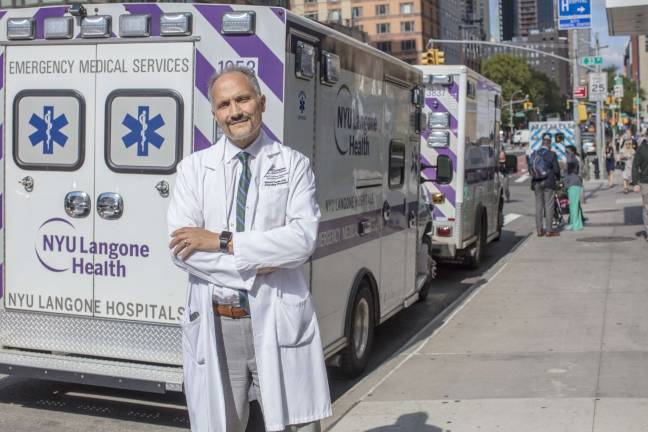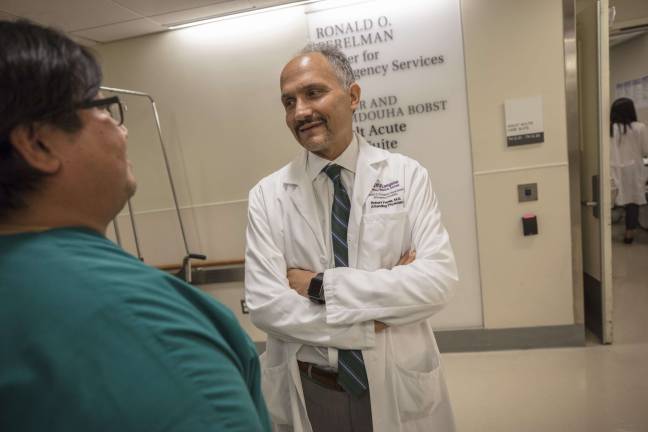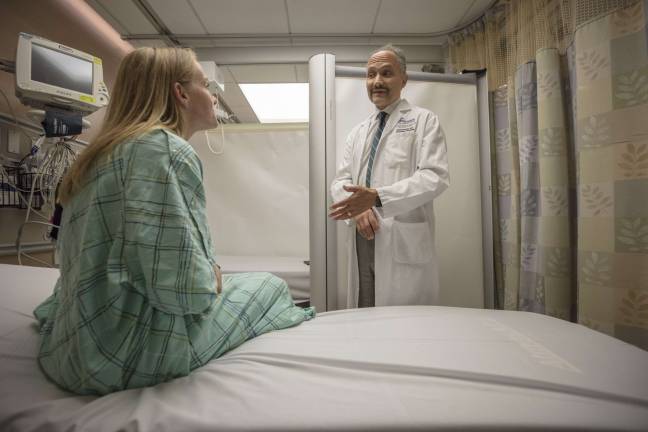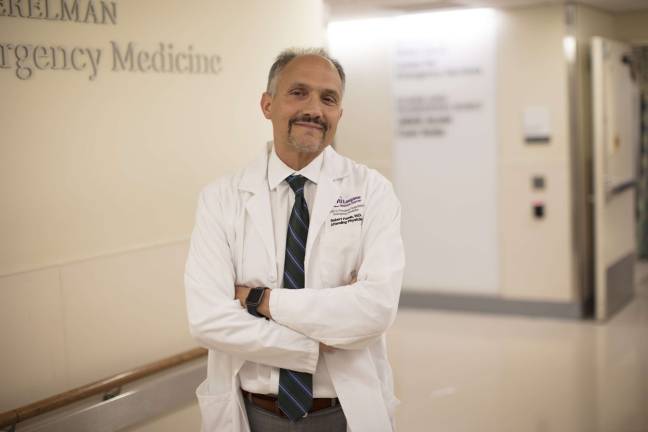saving lives every day




If you think your doctor’s office is busy, meet Dr. Robert Femia. His emergency departments see an average of 880 patients a day, 7 days a week, and 52 weeks a year — that’s over 320,000 patients a year. That’s because Femia is chair of the Ronald O. Perelman Department of Emergency Medicine, responsible for all the hospitals within NYU Langone Health, including the main hospital, Bellevue Hospital and other affiliated hospitals.
In addition, NYU recently launched a Virtual Urgent Care Service, where patients make an advance appointment and are treated over their phone or computer for problems like infections, rashes and other non-critical ailments.
With all these patients, Femia actually maintains an average waiting time of just 10 minutes per patient. Of course, a child with a runny nose will wait longer than a patient with cardiac arrest. But with 325 doctors, physician assistants, nurse practitioners and residents, plus the flexibility to staff up as needed, Femia is able to meet those goals.
As a child, Femia dreamed of becoming a sportscaster. Then when he was 16, his aunt, who was a nurse, got him a part time job as an orderly in the emergency room at her hospital. In this job, he transported patients, made beds and spent many hours with a mop and a broom.
But he also discovered a new world where he knew he belonged. It was a world where quick decisions needed to be accurate, where strength under pressure had to replace emotion and where the right diagnosis with limited information, could save lives.
He then went to medical school at the University of Connecticut, did his internship and residency at Michigan State University and before coming to NYU, was Chairman of Emergency Services at Lenox Hill Hospital.
In his current position he has three main responsibilities; treating patients, training residents and conducting research. The research includes finding new and better ways to deal with the unique demands of emergency room patients and their families.
“No one wakes up planning to go to an emergency room, so when it happens, they’re scared and their families are scared,” says Femia. That’s why understanding and communication are such critical skills and why he and his staff are continually receiving new training that includes learning how to have difficult conversations under the most stressful conditions.
There is one difficult conversation Femia had that does stand out. It was during the holiday season and a young couple left their baby with grandparents who were babysitting. After a while, the grandparents went to check on the child and found him unconscious in his crib. The child was rushed to the emergency room where he was pronounced dead, a victim of SIDS (sudden infant disease syndrome).
As Femia was informing the child’s parents, the mother in an outburst of sadness and anger confronted Femia with words that still ring in his ears: “My baby isn’t dead. You’re supposed to save them. That’s why they gave you the white coat.”
Of course, Femia has had many other conversations that are far more pleasant — with the heart attack victims brought back to life who just say thank you; with the stroke victims who regain their speech and say their first words to him; with the mother of a child whose broken leg is reset and the pain removed.
One growing issue Femia now faces is the rise of opioid addiction in Manhattan. The problem is often compounded when patients can no longer afford their prescriptions and then turn to a less expensive but even more dangerous substitute for their pain, heroin. Femia is seeing more of these patients arrive by ambulance, barely breathing. Fortunately, they can be saved if Naloxone is given in time.
Despite the pressure of his job, Femia loves it. “There are no bad days,” he says, “just busy days and it’s a privilege to do what I do.” He also points out, that unlike on TV, there isn’t a lot of romance going on in the ER, with most everybody just going home to relax with their families.
Even with his intense work schedule, Femia does find time to enjoy Manhattan. He lives in Greenwich Village with his wife and three children and goes out with them to restaurants like Little Owl, Via Carota and Bar Pitti, all right in his neighborhood.
He can also be found walking his dog Vella in Washington Square Park and he loves Broadway shows. The last show he saw was “Waitress” starring Sara Bareilles.
He is a big fan of the New York Knicks and goes to several games a year at Madison Square Garden. So one might say, that even when he relaxes, he’s surrounded by pain and suffering.